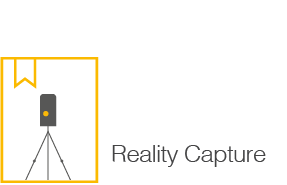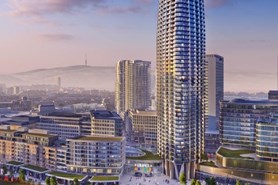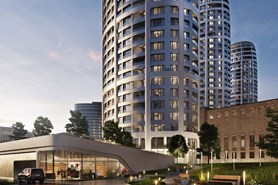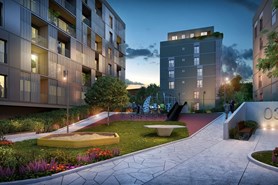Currently showing content for Slovakia
Our BIM & thermography services
Building Information Modelling (BIM) is about getting people and information working together effectively and efficiently. By using defined processes and technology, best value can be driven throughout the asset life cycle.
Optimising performance
Embedding BIM processes right from project inception helps protect and prioritise your development objectives into asset operation and decommissioning phases.
BIM enables a better understanding of the construction environment, reducing the risk of design clash and securing asset functionality. Wasteful processes and activities are removed, saving money and reducing environmental impact.
Adopting a BIM approach brings predictability to a project, not just for capital delivery but operation too. Traditionally, the volume of design and construction information handed onto asset operators is minimal. BIM facilitates data transfer, making maintenance issues easier to resolve and saving money in the long term.
A collaborative culture
In our experience, a high proportion of people tend to focus on the technical IT application of BIM, which often leads to a lack of engagement and adoption. In fact, it’s all about information management – delivering it in the right format, to the right people, at the right time.
Compliance
We have trained and accredited BIM Information Managers, so we are one of the few organisations who help clients adopt a BIM strategy for their projects.
Data collated through BIM can be extracted and manipulated to create detailed cost and programme models to keep your current project on track and to guide future developments.
BIM technology
BIM technology comes in various forms. Collectively it offers a number of benefits by:
- Enabling managed access to information
- Giving us the platform to create virtual models - representations of what is to be/has been constructed
- Allowing us to manoeuvre around models so we can see understand the environment better
- Allowing us to test the models and manage risk around proposals
- Giving us the means to analyse, extract and interrogate information
Expertise
BIM is a powerful tool, and we offer the detailed understanding and skilful management needed to achieve proper implementation and effectiveness. Our BIM support is underpinned by the wealth of construction data we hold, covering all key industry sectors, build types, sustainability ratings and procurement/contract arrangements.
In the United Kingdom, Gleeds is working in conjunction with the Construction Industry Council and the government’s BIM Task Group to raise BIM awareness and potential.
We offer thought leadership, training and are working with multiple clients to implement BIM in their organisations.
Our services include:
- Establishing information requirements, prioritising asset performance needs
- Implementing and managing BIM processes, ensuring compliance with project management procedures and processes
- Extracting, analysing and manipulating data held in virtual models for use in cost and programme models
- Delivering training and advisory services to support the BIM Information Manager role, in part or entirely
Thermography and aerial photography
At Gleeds we want to develop and implement new trends in the field of contactless measurement and imaging. We offer our clients complex monitoring and control services using drones and thermovision, directly from the air.
Aerial imaging
Monitoring through professional, remote-controlled drones enables safe, cost-effective and time-consuming gathering of the necessary information. UAV (Unmanned Aerial Vehicle) images provide high-quality documentation for buildings, enabling our clients to deliver comprehensive solutions to their specific needs.
Aerial imaging is performed through specially controlled drones that can be penetrated to places where ordinary technology is only difficult. UAV mapping enables instant data transfer to the ground, with a very detailed view of objects from a height. Drones equipped with calibrated cameras capture the overall view of buildings from different angles through photos and video documentation.
Our certified pilots have all the necessary permissions to work with unmanned aircraft. The purpose of aerial monitoring is to obtain images with information whose outputs can be used as a basis for:
- Checks and revisions
- Monitoring and inspections
- Background material for projection
- Thermal imaging
- Creating reports
- Photo and video documentation
Collected airframes and visual inspections are processed into data where the client at the end receives comprehensive unmanned monitoring in the form of reports of accuracy, quality and measurement results.
Thermography
Thermal camera drones are used for thermographic imaging of inaccessible buildings, power lines, thermal spills, fire prevention, and law enforcement.
Through a thermographic camera located on the drones, we can control and capture large buildings and photovoltaic systems, which in the past was not technologically possible. Thermovision is the most effective method of contactless non-invasive measurement, which consists of measuring the infrared radiation emitted by the surface of a building, thereby revealing the thermal bridges, that´s mean places through which most of the heat escapes.
The purpose of thermovision measurements in construction is to determine the distribution of surface temperatures by means of infrared technology and thereby to provide:
- Building inspections
- Diagnostics and troubleshooting
- Energy audit of building insulation and heat loss detection
- Checking the roof
- Diagnosis and maintenance of electrical distribution devices, transformer stations
- Detection of damage in hot-water distributions
- Moisture detection in walls and roofs
- Analysis of wall structure masonry
The result of the measurement is a graphic record with the listed defects displayed in the form of radiation radiated by the surface of the building. We help our clients identify critical areas to design systematic actions, respectively. solutions for their removal.

Kamil Bad'o
Director, Slovakia
- kamil.bado@gleeds.sk
- +421 252 922 320

Stuart Senior
Supervisory Board
- stuart.senior@gleeds.com
- + 44 (0)115 977 8000




